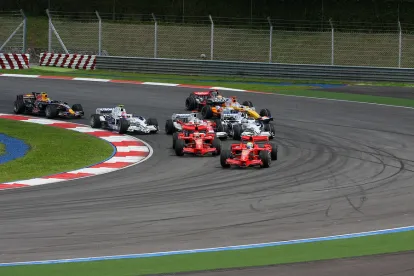At the last race weekend in Bahrain, Charles Leclerc became the second-youngest pole-sitter in Formula 1 history in just his second race with Ferrari. A few days’ prior in London, another rookie (at least, in his current role) was delivering what could be an historical change in the future of the sport: Ross Brawn’s vision of Formula 1 in 2021 and beyond.
In December 2020, the existing terms, set out in what is known as the Seventh Concorde Agreement, come to a conclusion. In consideration for the opportunity for change, Ross Brawn, one of Formula 1’s most-known faces, was appointed Formula 1’s Managing Director for Motorsport in 2017; tasked with identifying and then addressing the changes required to “create great action and bring the cars closer together, make the drivers the heroes and make the business more sustainable.”
Formula 1 (and indeed Liberty Media, the new owners of the sport following their $8bn acquisition in 2016), were one step closer to that goal after setting out the new framework at the meeting in London. The day commenced with a meeting of the Strategy Group, comprising the FIA, Formula 1, Mercedes, Ferrari, Red Bull, McLaren, Williams and Renault. The remaining teams were allowed to attend, but only as observers. A separate meeting of the Formula 1 Commission followed, including every team, Formula 1, track representatives, and sponsors. Four key pillars of change were identified and discussed: cars, engines, revenues and costs.
i. Cars
It has been widely recognised in the sport that, since the retirement of the V8 engines in 2014 for the leaner, more economical 1.6 litre turbo engines, the cars have been reliant on aerodynamics to make up the speed of that lost power. This came at a price, both in terms of the investment needed to produce the most aerodynamically capable car, but also in terms of the on-track action. It has been reported that with the current crop of cars, when racing nose-to-tail, the car behind loses 50% of its downforce by racing in what is known as the ‘dirty air’ of the car in front. Attempts have been made to address this (DRS, for example) but this is seen as an artificial answer to the problem. After over two years’ of research, Pat Symonds, Formula 1’s Technical Director working under Ross Brawn, believes an answer to the problem has been found.
Using computational fluid dynamics (a way of simulating airflow using software, rather than a traditional wind tunnel) and, by asking each individual team to be involved in the research and pooling their results, Formula 1 believe it has achieved an outstanding outcome. By controlling this dirty air and lifting it up and over the car racing behind (known as ‘up-washing’), the car behind is clear to race in clean air. This, Formula 1 state, has resulted in the car behind losing only 5% of its downforce – an enormous difference.
ii. Engines
Formula 1 is, and always has been, a leader in the technological advancement of the automobile. Cutting-edge technology first created for Formula 1 is often later utilised in road cars: paddle-shift gearboxes, carbon-fibre chassis and adaptive suspension are a few examples. On the dawn of the electric revolution, Formula 1 is conscious of remaining the leader in the field. “We have recognised we have to stay road relevant”, said Brawn. Ultimately, the FIA – the sports’ governing body – will define the engine regulations, but Formula 1’s view is that the engines should be simpler, cheaper, more powerful and noisier. With the view to using a hybrid-turbocharged unit, Formula 1 want the emphasis of control of that energy to be with the driver; the idea behind it being that the driver can utilise that power strategically to overtake.
iii. Revenues
Formula 1’s current revenue structure has been long-debated time over. Currently, a portion of the revenue pot is divided between the teams dependent on their final position in the constructors’ championship. Five remaining teams receive a subsequent, additional payment based on a variety of factors (including, for instance, commitment to Formula 1). From 2021, Formula 1 is seeking an amended revenue system. The proposals include payments more heavily weighted on performance in the championship, with additional payments made to teams who manufacture their own engines (a number of teams currently purchase their engines from other teams, rather than manufacturing their own). This structure is seen as Formula 1 recognising engine suppliers’ commitment to Formula 1.
iv. Costs
Any fan of the sport will have seen over the last decade that the costs involved in Formula 1 can be extensive and challenging. Formula 1 is keen to address the costs involved, with the aim of making the sport more appealing for new teams to join. The introduction of a cost cap has been mooted, and Formula 1 has not been secretive in their desire to introduce such a cap. This introduction, however, is arguably the most contentious of the new proposals. As of yet, no firm figures have been made public, and it remains to be seen whether such a cap will make the cut in the final regulations.
Now that the teams have seen the proposals first-hand, there will be a period of reflection, feedback and refinement. Formula 1 is open to making tweaks for the better of the sport. The aim is for the stakeholders in the sport to meet again at the beginning of May, where the refined – and intended final – plans will be presented. Whilst time is of the essence, the final vote on the 2021 regulations is unlikely to take place until, at the earliest, the next meeting of the FIA’s World Motor Sport Council on 14 June 2019. It remains to be seen whether all four pillars of change will come to fruition.




 />i
/>i

